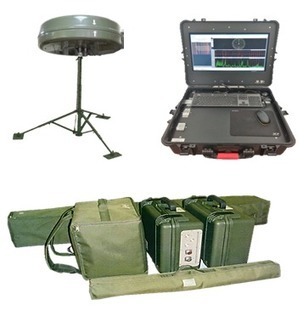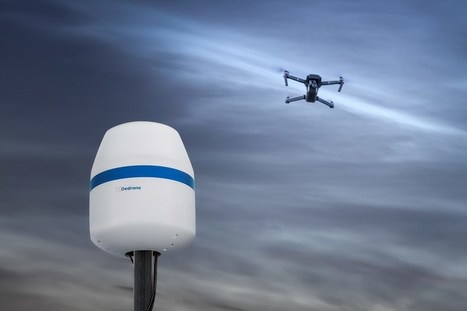 Your new post is loading...
 Your new post is loading...

|
Rescooped by
Romain
from DEFENSE NEWS
January 24, 2020 5:05 AM
|
La Russie propose aux pays du Moyen-Orient et d’Afrique du Nord de renforcer de manière significative leur système de défense aérienne (AD) en plus de la protection contre les attaques de missiles balistiques qui peut être assurée par le S-400 ADMS.
Dans le même temps, la Russie propose de mettre en place un système multicouche de défense contre les drones de petite taille qui pourraient constituer une menace pour les installations vitales.
Le système AD de chaque installation devrait comprendre un équipement de contrôle, un équipement de détection radar, des canons anti-aériens et un équipement de guerre électronique spécifiquement conçus pour être utilisés contre des UAV de petite taille. Ce sont aussi des équipements de reconnaissance radio et suppression radio des lignes de communication radio VHF.
Cela garantira la détection rapide de l’attaque, l’identification des moyens d’attaque, le brouillage radioélectrique et si nécessaire : la destruction par le feu.
Parmi les systèmes proposés figurent:
Moyens de reconnaissance radar:
Radar PODLET-Е
MFR 1L122-1Е
véhicules de combat de l’équipe des MANPADS GIBKA-S.
Ces systèmes offrent également une protection contre les missiles de croisière.
Pour la détection et la suppression électronique des UAV de petite taille, des systèmes REPELLENT peuvent être utilisés.
Un groupement peut en outre inclure d’autres éléments.
La livraison des moyens susmentionnés peut être effectuée dans les 18 à 24 mois suivant la signature du contrat ou moins.
Parallèlement à la puissance de feu, la Russie propose des moyens de détection et de suppression des ondes radio-électroniques spécialement conçus pour les UAV de petite taille:
SAPSAN-BEKAS; KUPOL; PISHAL; ARBALET, ARBALET-M; LUCH.
Avantages du système AD proposé:
possibilité de différents types de reconnaissance (radar, radio ou optique);
possibilité d’enclenchement automatique et d’engagement de l’UAV en vol de n’importe quelle direction;
possibilité de suppression radioélectrique du drone de petite taille, lorsque la puissance de feu est inefficace;
Surveillance radio et possibilité de suppression radio des lignes de communication radio VHF.
Un certain nombre de pays de la région MENA portent déjà un intérêt à cette solution anti-UAV

|
Scooped by
Romain
January 23, 2020 12:20 AM
|
Dedrone, a developer of counter-drone technologies, has announced the launch of a new radio frequency sensor for the detection of small unmanned aerial systems (sUAS), the Dedrone RF-160. The new sensor is is an upgraded version of the company’s RF-100 with increased detection range, a streamlined installation process, and integrated LTE communications.
The RF-160 provides early detection of unmanned aircraft within an average range of 1.6km, and up to 5km for certain drone types, as well as tracking the number of drones within the airspace. Range can be extended by utilising multiple sensors, and additional information can be provided by integrating other detection technologies, such as radar, PTZ cameras and other Dedrone counter-UAS systems.
The RF-160 can be installed by non-specialist users in a few minutes, requiring only a power supply and a mounting pole. The system automatically connects to the Dedrone Cloud via LTE to access comprehensive data for drone risk analysis, without the need for a local server, and immediately begins detecting drones.
The RF-160 meets the needs of organizations operating in urban areas, which have more radio frequency activity from radio communication, cell phones, GPS, and other technologies, and thus face a higher potential of RF interference.
Joerg Lamprecht, CEO and co-founder of Dedrone, commented: “The RF-160 can be quickly installed and provides a baseline of information on all airspace activity, regardless of the type of manufacturer, or even if it is a home-made drone. Lower airspace security starts with detection, and the RF-160 is the most advanced product to provide our customers with the analytics they need to act upon sUAS threats to their airspace.”
|

|
Scooped by
Romain
January 24, 2020 5:05 AM
|
Since December, Indra’s representative, Jorge Munir El Malek, has headed up the working group that will define the minimum requirements these systems must meet to be implemented in airports and other environments
EUROCAE, the leading European body in the development of industrial aviation standards, will offer the reference framework for the implementation of these systems in a homogeneous and safe way.
Indra's ARMS solution for countering drones is one of the most recognized and effective in the market
ARMS
EUROCAE, the European Organization for Civil Aviation Equipment, has entrusted Indra, one of the leading global technology and consulting companies, with the presidency of the new working group (WG-115). It has been set up to develop the standards that will support the safe and harmonized implementation of anti-drone systems in airports and other environments.
The group’s launch meeting took place last December and was attended by 44 experts from 36 organizations, including the European Commission, the European Aviation Safety Agency (EASA), and Eurocontrol. During the meeting, the group voted and decided to appoint Indra’s representative, Jorge Munir El Malek, as president of the team.
Indra produces the ARMS anti-drone solution, the most advanced and effective in the market. The company is one of the world leaders in electronic defense technologies, communications, optoelectronic systems, radar, command and control systems that comprise this type of systems.
In December 2018, one of the main European airports, London Gatwick, was forced to cancel all its operations for more than 30 hours after the sighting of unmanned aircraft flying nearby. The event brought to the fore a problem that is a major concern in the sector. Each year, the number of reported incidents of this type grows significantly.
Airports, navigation service providers, as well as the other actors involved in operations safety, urgently seek to implement effective systems to deal with this threat, so that drones can be detected and prevented from flying near their facilities without authorization.
EUROCAE, as the leading European body in the development of industrial reference standards for aviation, works to offer common guidelines for the requirements and characteristics such systems must meet. This is intended to ensure that a common frame of reference is available that enables security and interoperability of the highest level.
During the launch meeting, it was also announced that the American Radio Technical Commission for Aeronautics (RTCA) recently took the decision to create a new committee (SC-238) focused on countering drones (Counter-UAS) that will work together with EUROCAE to produce standardized documents by the two organizations. With this same objective, the group will maintain close collaboration with other international entities such as NATO and the European Defense Agency (EDA).
The new group will carry out its activities during 2020 and 2021, with the objective of preparing three reference documents: the definition of the operational concept linked to this type of systems (C-UAS), the specification of performance requirements for non-cooperative UAS detection, and the specification of interoperability requirements with existing systems, such as Advanced Surface Movement Guidance and Control System (A-SMGCS) of airports.
The anti-drone systems are integrated by sensors of different types that enable them to detect the presence of very small aircraft several kilometers away, identify them and take several countermeasures to prevent their access to the areas protected by those systems. These are complex systems that must operate without affecting airport equipment or aircraft.
About Indra
Indra (www.indracompany.com) is one of the main global technology and consultancy companies and the technological partner for its customers’ key business operations around the world. It’s a major global supplier of proprietary solutions in specific segments of the Transportation and Defense markets and a leading company in digital transformation and information technology consultancy in Spain and Latin America by means of its Minsait subsidiary. Its business model is based on a comprehensive range of proprietary products, with an end-to-end approach that has high value and a significant innovative component. In 2018 Indra received income totaling €3.104 billion and had 43,000 employees, a local presence in 46 countries and business operations in more than 140 countries.
|




 Your new post is loading...
Your new post is loading...







